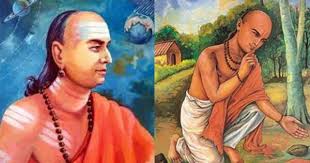Varahamihira: The Polymath of Ancient Indian Science

Introduction
Varahamihira, born in 505 CE in Ujjain, now in Madhya Pradesh, India, was one of the most prominent scholars of the Gupta period, known for his profound contributions to astronomy, astrology, and mathematics. His works have not only influenced Indian science but also found their way into Islamic and later into European scientific traditions. Varahamihira's name is synonymous with the integration of scientific inquiry with the cultural and philosophical ethos of ancient India.
Early Life and Background
Varahamihira's early life is not well-documented, but it is known that he was likely born into a Brahmin family, which would have provided him with an education in the traditional Indian sciences. Ujjain, where he lived, was a major center for astronomical studies during his time, hosting one of the most renowned observatories in ancient India.
Major Works
Varahamihira authored several influential texts, three of which stand out:
- Panchasiddhantika ("Five Astronomical Canons"):
- This work is a compendium of five ancient Indian astronomical treatises:
- Surya Siddhanta
- Romaka Siddhanta
- Paulisa Siddhanta
- Vasishtha Siddhanta
- Paitamaha Siddhanta
- Varahamihira compares these systems, providing insights into their methods for calculating planetary positions, solar and lunar eclipses, and the length of the year. His commentary on these texts helped in preserving ancient astronomical knowledge.
- This work is a compendium of five ancient Indian astronomical treatises:
- Brihatsamhita ("The Great Compilation"):
- Perhaps his most famous work, Brihatsamhita is an encyclopedic text that covers a wide range of subjects:
- Astrology: Detailed chapters on horoscopes, omens, and the influence of planets.
- Architecture: Guidelines for constructing buildings, cities, and temples.
- Gemology: Properties of gems and their astrological significance.
- Meteorology: Observations about weather patterns and their predictions.
- Agriculture: Advice on farming based on astrological and climatic conditions.
- This text showcases Varahamihira's polymathic nature, blending science with practical applications in daily life.
- Perhaps his most famous work, Brihatsamhita is an encyclopedic text that covers a wide range of subjects:
- Brihat Jataka ("The Great Book of Nativity"):
- A treatise on astrology, focusing on natal astrology or the study of horoscopes at birth. It includes methods for interpreting the positions of planets at the time of birth to predict one's life events and character traits.
Scientific Contributions
- Astronomy: Varahamihira's astronomical observations were quite accurate for his time. He discussed the Earth's shape, the causes of eclipses, and methods to calculate the positions of celestial bodies.
- Mathematics: While his direct contributions to mathematics are less known, his works inherently required a strong foundation in mathematics, particularly in geometry and algebra, for astronomical calculations.
- Astrology: He systematized astrology, making it a more structured science in India. His astrological works have had a lasting impact on Hindu astrology, influencing practices up to the present day.
Cultural and Philosophical Impact
Varahamihira's work reflects the cultural synthesis of his time:
- Blend of Science and Tradition: His writings show an integration of empirical science with Vedic astrology and philosophy, embodying the Indian tradition of seeing knowledge as interconnected.
- Practical Applications: His emphasis on how astronomy and astrology could be applied in daily life, from agriculture to architecture, demonstrates the practical orientation of ancient Indian science.
- Sanskrit Verses: He wrote in Sanskrit, using poetic forms that made his scientific observations both memorable and accessible to a broader audience.
Legacy
- Influence on Islamic Science: His works were translated into Arabic, affecting scholars like Al-Biruni, who studied Indian astronomy and astrology, thereby contributing to the Islamic Golden Age of science.
- Impact on European Astronomy: Through Islamic scholars, Varahamihira's ideas indirectly influenced medieval and Renaissance European astronomers.
- Modern Recognition: Varahamihira remains a revered figure in Indian science history, with numerous institutions, awards, and research centers named after him.
Later Life
While details of Varahamihira's later life are sparse, it's believed he continued his scholarly activities in Ujjain until his death around 587 CE. He would have played a pivotal role in the Ujjain observatory, contributing to both education and the advancement of science.
Conclusion
Varahamihira's contributions to the sciences of his time were monumental. He was not just an astronomer but a polymath who influenced a wide range of fields through his writings. His work exemplifies how ancient Indian scholars could engage with the universe in a way that was both scientifically rigorous and culturally rich. His legacy is a testament to the enduring quest for knowledge that transcends cultural and temporal boundaries, continuing to inspire scholars and enthusiasts in the fields of astrology, astronomy, and beyond.
